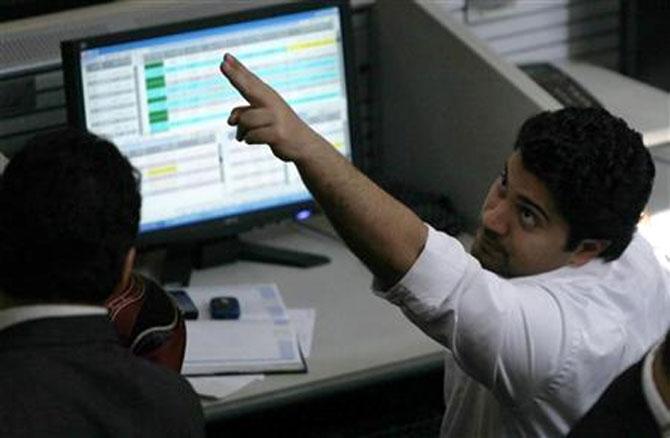Large investors track high-frequency data that is immediately available today.
That data has been bullish, points out Debashis Basu.

This is my third piece in a series that explains why the stock market (which should ideally reflect the underlying economy) is so resilient in the face of a global pandemic.
The first piece pointed out extraordinary corporate earnings as the main reason.
The second piece was more macro, explaining that at least a dozen large sectors -- cement, chemicals, software, textiles, steel, building materials, etc -- are simultaneously doing extremely well, each for very independent reasons.
This piece goes further in looking at the macro scenario to explain why we need to look at a different set of data to make up our mind whether economic activity as a whole is shrinking or not, given that technology is allowing us to get faster and better macro data.
On April 1 this year, the government announced that collection from goods and services tax hit a record high of about Rs 1.24 trillion.
From September 2020 to March 2021, GST collection was higher every month over the same month of the previous fiscal year.
Over the whole year, the GST shortfall was Rs 85,314 crore (Rs 853.14 billion).
This was due to just one month, April 2020, when the whole country was under a complete and strict lockdown.
That month GST collection was down by about Rs 82,000 crore (Rs 820 billion).
In short, if you remove April from the calculations, economic activity in FY21, as measured by GST collection, has been the same as FY20.
And yet, on May 31, when the government announced that India's gross domestic product contracted by 7.3 per cent in 2020-2021, commentators started shaking their heads again and pointed out how irrational the stock market was and that it was flying high in the face of gloom and doom -- based on the GDP figure and anecdotal stories of a health care crisis, rising unemployment, and the real impact on small businesses.
Leaving aside anecdotal evidence, which is irrelevant in the macro context, my question is: Which data would you trust more?
There is a reason why I have mentioned the dates for GST and GDP data.
Notice that the GST data for the month and year was available one day after the year ended! A giant macro data point, reflecting countrywide economic activity, was available in a day.
This is called high-frequency economic data and it is improving everyday.
Mind you, this is not an estimate. It is real-time data based on transactions.
What about the GDP data? For one, it is too late.
The FY21 data of GDP growth was released two months after the fiscal year ended.
Secondly, it is an estimate of economic activity and I am not sure what kind of work goes behind collecting this data.
In the March quarter, when businesses were functioning more or less normally and companies across the board, except a few sectors like automobiles, reported bumper profits, GDP was reported to have grown by just 1.6 per cent.
Could there be some major flaw in the collection and analysis of GDP data, which is so depressed when almost all core industries and the large chunks of the service sector are doing so well?
Like GST, there are other data points that are much more reliable than GDP because they are not estimates.
This is real data which is recorded very precisely, such as electricity consumption, which was higher in February this year, under conditions of partial lockdown, than it was in February last year, when the economy was fully open.
Among the data that are estimates, a more reliable data set is the purchasing managers' index.
This is based on a monthly survey of supply chain managers across a dozen or so important industries, covering both upstream and downstream activity.
The PMI data showed continued expansion in the economy from August 2020 right until April 2021.
This is why the market started climbing from late May last year.
Another example is the data showing automobile sales.
Earlier, the data from the Society of Automobile Manufacturers was watched.
But this is flawed because it shows despatch from factory gate to dealer and not actual sales.
Now we have automobile registration data, available from the Federation of Automobile Dealers' Association.
This is more reliable because it proves actual sales, which have to be completed before automobile registration.
In short, the data that market players watch is a different set and it is available faster.
Not the GDP data, which tends to be iffy.
Technology has changed how we collect data and which data set is more reliable.
The whole process of collecting ground-level data and feeding it into a model to spit it out the GDP growth rate after two months, which could be revised later, is out of sync with the technology-driven economy that India is becoming.
The market understands this well even if commentators don't.
I am not for a moment saying that since the market is doing well the economy must be doing well too.
That would be perverse.
All I am saying is that large investors track high-frequency data that is immediately available today.
That data has been bullish. As and when that data shows negative trends and corporate earnings begin to stagnate, the markets will fall.
It will not decline based on anecdotal reports.
Debashis Basu is the editor of www.moneylife.in












 © 2025
© 2025